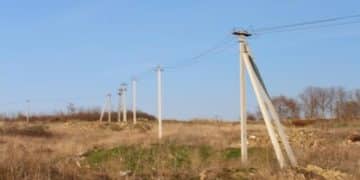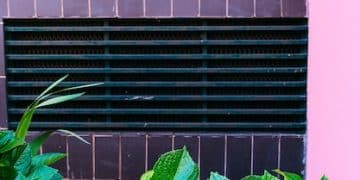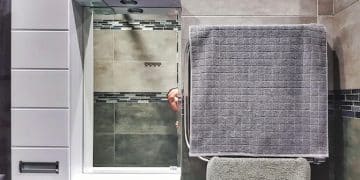Energy Audit Checklist: Winterize Your Home & Cut Energy Costs in 2025

Before winter 2025, use an energy audit checklist to identify and fix energy leaks in your home: inspect insulation, seal drafts, check HVAC systems, and replace old appliances to improve energy efficiency and significantly reduce your energy bills.
Preparing your home for the colder months is about more than just comfort; it’s about saving money and contributing to a greener planet. An energy audit checklist: identify and fix energy leaks in your home before winter 2025 is your roadmap to a more energy-efficient, cost-effective, and comfortable living space.
Why Conduct an Energy Audit?
An energy audit is a comprehensive assessment of your home’s energy consumption. It helps pinpoint areas where energy is being wasted, allowing you to make targeted improvements. But why is this so important, especially before winter 2025?
Understanding the benefits can motivate you to take action and prepare your home for optimal energy efficiency. It’s not just about saving money; it’s about creating a sustainable living environment.
Cost Savings
One of the most compelling reasons to conduct an energy audit is the potential for significant cost savings. Identifying and fixing energy leaks can dramatically reduce your monthly utility bills.
By addressing inefficiencies, you’re not only reducing waste but also optimizing your energy usage, leading to long-term financial benefits.
Increased Comfort
An energy-efficient home is a more comfortable home. By sealing drafts and improving insulation, you can maintain a consistent temperature throughout your living space.
Say goodbye to cold spots and uncomfortable temperature fluctuations, and hello to a cozy and inviting home environment.
Environmental Impact
Reducing your energy consumption is a powerful way to lessen your environmental footprint. Lower energy usage translates to fewer greenhouse gas emissions and a more sustainable lifestyle.
By taking steps to improve your home’s energy efficiency, you’re contributing to a healthier planet for future generations.
- Save Money: Reduce your monthly utility bills by identifying and fixing energy leaks.
- Improve Comfort: Maintain a consistent temperature throughout your home for enhanced comfort.
- Reduce Environmental Impact: Lower your carbon footprint by reducing energy consumption.
In conclusion, conducting an energy audit offers a multitude of benefits, from cost savings to increased comfort and environmental responsibility. It’s a practical step toward creating a more sustainable and efficient home environment.
Essential Tools for Your Energy Audit Checklist
Having the right tools can make your energy audit more effective and efficient. While professional energy auditors use specialized equipment, you can conduct a thorough assessment with a few basic items. So, what do you need to get started?
Equipping yourself with these tools will allow you to identify common energy leaks and areas for improvement in your home.
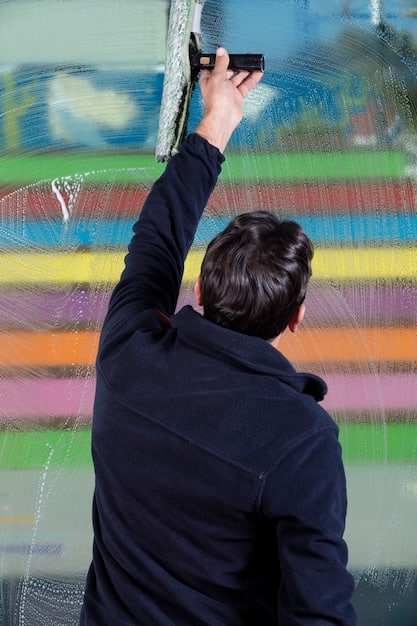
Thermal Leak Detector
A thermal leak detector, also known as an infrared thermometer, is invaluable for identifying temperature variations in your home. It allows you to detect drafts and insulation gaps that may not be visible to the naked eye.
By scanning walls, windows, and doors, you can pinpoint areas where heat is escaping or cold air is entering.
Caulk and Weatherstripping
Caulk and weatherstripping are essential for sealing gaps and cracks around windows, doors, and other openings. These materials create an airtight barrier, preventing drafts and reducing energy loss.
Having a variety of caulk and weatherstripping options on hand ensures you can address different types of gaps and cracks effectively.
Insulation Materials
Assessing your home’s insulation is a crucial part of an energy audit. Having insulation materials readily available allows you to address any deficiencies you uncover.
Whether it’s adding fiberglass batts to your attic or using spray foam to seal small gaps, proper insulation is key to maintaining a comfortable and energy-efficient home.
- Thermal Leak Detector: Identify temperature variations and drafts in your home.
- Caulk and Weatherstripping: Seal gaps and cracks around windows and doors.
- Insulation Materials: Address insulation deficiencies in your attic and walls.
In summary, having the right tools at your disposal will empower you to conduct a comprehensive energy audit and take immediate action to address any issues you discover. With these tools, you can create a more energy-efficient and comfortable home.
Checking Insulation Levels
Proper insulation is a cornerstone of energy efficiency. Inadequate insulation can lead to significant heat loss in the winter and heat gain in the summer, driving up your energy bills. So, how do you assess your home’s insulation levels?
By thoroughly inspecting your insulation, you can identify areas where improvements are needed and take steps to enhance your home’s energy efficiency.
Attic Insulation
The attic is one of the most critical areas to insulate, as heat rises and can easily escape through the roof. Check the depth and condition of your attic insulation to ensure it meets recommended levels.
If the insulation is thin, uneven, or damaged, it’s time to add more. Consider using fiberglass batts, blown-in cellulose, or spray foam for optimal insulation.
Wall Insulation
Wall insulation is another essential component of a well-insulated home. While it’s more challenging to inspect wall insulation, there are a few methods you can use.
Check for gaps around electrical outlets and switch plates, as these can indicate missing or inadequate insulation. You can also hire a professional to perform a thermal imaging scan to identify areas of heat loss.
Basement or Crawl Space Insulation
Basements and crawl spaces are often overlooked when it comes to insulation, but they can significantly impact your home’s energy efficiency. Insulating these areas can help prevent heat loss and moisture buildup.
Consider insulating the walls and ceiling of your basement or crawl space with rigid foam insulation or fiberglass batts for improved energy performance.
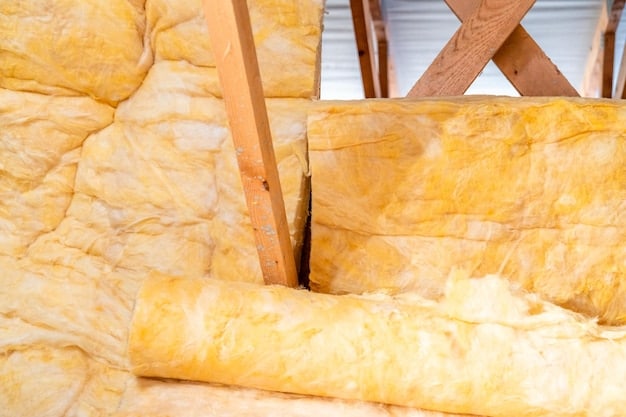
- Attic Insulation: Check the depth and condition of insulation in your attic.
- Wall Insulation: Inspect for gaps around outlets and consider a thermal imaging scan.
- Basement/Crawl Space: Insulate walls and ceilings to prevent heat loss and moisture buildup.
In conclusion, checking and upgrading your home’s insulation levels is a crucial step in improving energy efficiency. By focusing on the attic, walls, and basement, you can create a more comfortable and energy-saving living environment.
Sealing Drafts and Air Leaks
Drafts and air leaks can undermine your home’s energy efficiency, allowing warm air to escape in the winter and cool air to escape in the summer. Sealing these leaks is a cost-effective way to improve comfort and lower your energy bills. So, where should you focus your efforts?
By systematically sealing drafts and air leaks, you can create a tighter, more energy-efficient home that saves you money and enhances your comfort.
Windows and Doors
Windows and doors are common sources of drafts and air leaks. Inspect the frames and gaps around windows and doors for any signs of leakage.
Use caulk to seal small gaps and weatherstripping to create a tighter seal around the edges. Consider replacing old or damaged windows and doors with energy-efficient models.
Electrical Outlets and Switch Plates
Surprisingly, electrical outlets and switch plates can be significant sources of air leaks. Cold air can enter your home through these openings, even if they appear sealed.
Install foam gaskets behind the outlet and switch plate covers to block drafts. This simple and inexpensive fix can make a noticeable difference in your home’s energy efficiency.
Plumbing and Utility Penetrations
Anywhere pipes or wires enter your home, there’s potential for air leaks. Check around plumbing fixtures, electrical wiring, and other utility penetrations for gaps.
Use caulk or spray foam to seal these openings and prevent drafts. Pay special attention to areas where pipes enter the foundation or walls.
- Windows and Doors: Seal gaps and cracks around frames and edges.
- Electrical Outlets: Install foam gaskets behind outlet and switch plate covers.
- Plumbing Penetrations: Seal openings around pipes and utility entries.
In summary, sealing drafts and air leaks is a straightforward and effective way to improve your home’s energy efficiency. By targeting windows, doors, electrical outlets, and plumbing penetrations, you can create a more comfortable and energy-saving living environment.
HVAC System Efficiency
Your heating, ventilation, and air conditioning (HVAC) system plays a crucial role in maintaining a comfortable indoor environment. However, an inefficient HVAC system can waste energy and drive up your utility bills. So, how can you ensure your HVAC system is operating at peak efficiency before winter 2025?
By optimizing your HVAC system, you can maintain a comfortable indoor environment while minimizing energy consumption and reducing your carbon footprint.
Regular Maintenance
Regular maintenance is essential for keeping your HVAC system running smoothly. Schedule annual tune-ups with a qualified HVAC technician to clean and inspect your system.
This includes changing air filters, cleaning coils, and checking refrigerant levels. A well-maintained system operates more efficiently and lasts longer.
Programmable Thermostat
A programmable thermostat allows you to adjust your home’s temperature based on your schedule. Set the thermostat to lower the temperature when you’re away or asleep, and raise it when you’re home and awake.
This can significantly reduce energy consumption without sacrificing comfort. Consider upgrading to a smart thermostat for even greater control and automation.
Duct Inspection and Sealing
Leaky ducts can waste a significant amount of energy, as heated or cooled air escapes before reaching its intended destination. Inspect your ductwork for any gaps or tears.
Seal leaks with duct tape or mastic sealant. For more extensive repairs, consider hiring a professional to seal or replace your ductwork.
- Regular Maintenance: Schedule annual tune-ups with a qualified technician.
- Programmable Thermostat: Adjust temperature based on your schedule for energy savings.
- Duct Inspection: Seal leaky ducts to prevent heated or cooled air from escaping.
In conclusion, optimizing your HVAC system is a key component of energy efficiency. By prioritizing regular maintenance, using a programmable thermostat, and sealing duct leaks, you can maintain a comfortable indoor environment while minimizing energy consumption.
Evaluate Appliance Energy Consumption
Your household appliances account for a significant portion of your overall energy usage. Evaluating their energy consumption and making informed choices can lead to substantial savings. So, how do you assess the energy efficiency of your appliances?
By carefully evaluating your appliance energy consumption and making smart choices, you can significantly reduce your energy bills and contribute to a more sustainable lifestyle.
Energy Star Ratings
Look for the Energy Star label when purchasing new appliances. Energy Star-certified appliances meet strict energy efficiency guidelines set by the EPA.
These appliances use less energy than standard models, saving you money on your utility bills over their lifespan. Check the Energy Star website for a directory of certified products.
Refrigerator Efficiency
Your refrigerator is one of the biggest energy consumers in your home. Ensure your refrigerator is operating efficiently by keeping the coils clean and the door seals tight.
Avoid placing your refrigerator near heat sources, such as ovens or direct sunlight. Consider replacing an old, inefficient refrigerator with an Energy Star-certified model.
Lighting Choices
Switching to energy-efficient lighting can significantly reduce your energy consumption. Replace incandescent bulbs with LED bulbs, which use up to 75% less energy and last much longer.
Consider using dimmer switches to further reduce energy usage and create a more comfortable ambiance. Turn off lights when you leave a room to maximize savings.
- Energy Star Ratings: Look for the
| Key Point | Brief Description |
|---|---|
| 💡 Insulation Check | Assess attic, wall, & basement insulation for gaps and adequate coverage. |
| 🚪 Sealing Drafts | Seal windows, doors, & electrical outlets to prevent air leaks. |
| ⚙️ HVAC System | Maintain HVAC, use programmable thermostat, and seal ductwork. |
| ⚡️ Appliance Evaluation | Check Energy Star ratings and optimize usage of appliances. |
FAQ: Home Energy Audits
▼
An energy audit is a comprehensive assessment to identify energy inefficiencies in your home. You should do one to save money, improve comfort, and reduce your environmental impact.
▼
You will need a thermal leak detector, caulk, weatherstripping, and insulation materials. These tools will help you find and fix common energy leaks.
▼
It’s advisable to conduct a thorough energy audit at least once a year, ideally before the start of the heating season to prepare for winter.
▼
Use a thermal leak detector to find temperature variations or feel for drafts. Seal gaps with caulk or weatherstripping to block air leaks.
▼
Schedule regular maintenance, use a programmable thermostat, and seal ductwork leaks. These steps can help your system operate more efficiently.
Conclusion
By completing an energy audit and addressing key areas such as insulation, drafts, HVAC systems, and appliance efficiency before winter 2025, you can create a more comfortable, energy-efficient, and cost-effective home. Take these steps to save money, reduce your carbon footprint, and enjoy a warmer winter.


